
Need assistance?
Need Assistance? Call Us 0330 058 0630
Did You Know? We Sell Fire Alarm Systems as Complete Kits. Shop Now
05/03/2025 • by Alice P
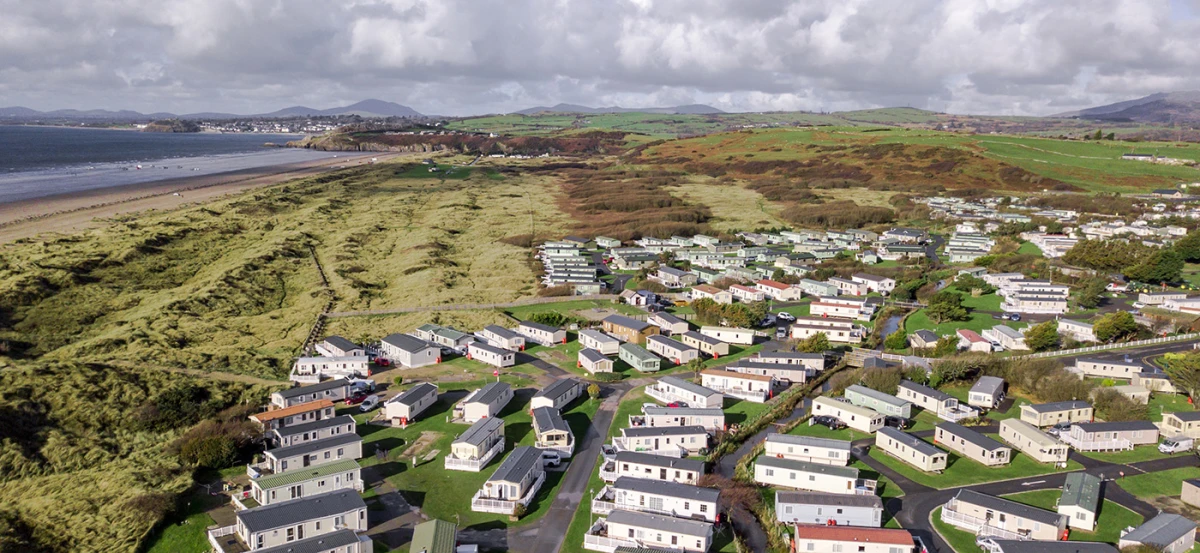
Fire safety in caravans, motorhomes, and campervans is crucial to protect against unpredictable fire risks in confined spaces. Proactive fire safety involves understanding potential risks, implementing preventive measures, and equipping your mobile living space with appropriate safety devices, such as smoke alarms. This approach is especially important for caravans, campervans, and motorhomes, where confined spaces can increase fire hazards.
The danger fires cause can grow quickly in small spaces. This is especially true when there are flammable materials, liquids, and gases. Caravans, campervans, and tiny homes might look cosy and safe, but they contain fuel for a fire. If your leisure home does not have smoke alarms and fire safety equipment, a fire could destroy it in minutes.
Incorrect Storage of Flammable Liquids: You must always take care when handling flammable liquids such as petrol and gasoline. It is important to have a special area for storing flammable liquids. This keeps them away from open flames and other sources of ignition.
Overheating Engines: Engines are surrounded by flammable liquids. Engine overheating ranks among the most common causes of campervan fires. To minimise the fire safety risks, you should regularly check the temperature gauge and coolant levels of the caravan. You should also park in the shade to keep the interior of the caravan cool.
Overloading Plug Sockets: Electrical fires can easily be started through overloaded plug sockets. Charging several items at the same time can be easy. However, overloading the plug socket and leaving it alone can quickly start a fire.
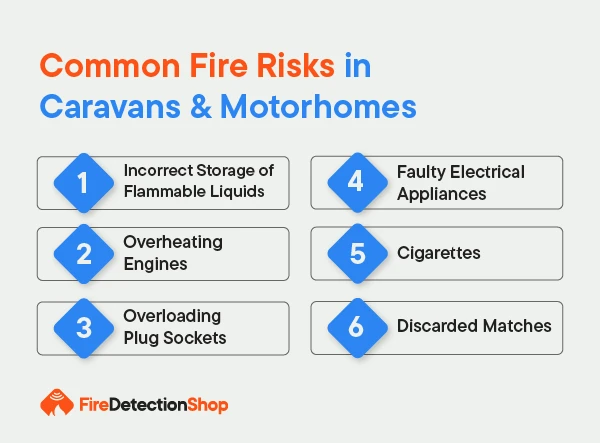
Faulty Electrical Appliances: When the electrical connection for an outlet is drawing too much power, the appliance can overheat. To avoid this risk, you should have a professional service your equipment regularly.
Cigarettes: As a rule, you should avoid smoking in enclosed spaces. If you do smoke, you should always use a metal or glass ashtray and never smoke in bed. Having a lit cigarette in bed and falling asleep can rapidly start a fire.
Discarded Matches: In caravans, motorhomes and campervans, flammable liquids are always present as they are used to run the engine. You must always discard a match safely to avoid exposing the flammable liquids to an open flame.
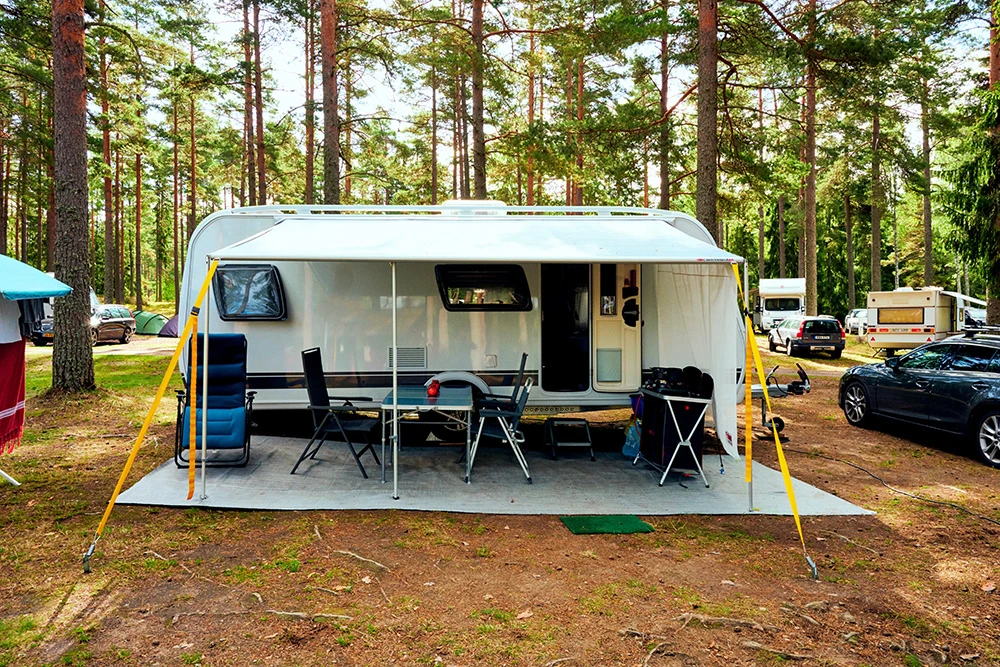
In the UK, all caravans and motorhomes are legally required to have a fire extinguisher. The extinguisher must comply with BS EN3. This is the British Standard for portable fire extinguishers.
Fire safety equipment isn’t one-size-fits-all. To protect your caravan, motorhome, or campervan, invest in the right tools designed for these spaces.
So, what equipment should you use to protect your caravan or motorhome?
Fire Blankets: Fire blankets protect the kitchen area in your leisure homes where hot oil poses a significant fire risk.
A fire blanket can be swiftly placed over the flames to smother the ignition point and prevent the fire from spreading. When positioning your fire blanket, avoid mounting it above the hob, as reaching over a fire to retrieve it would be unsafe. Instead, install it to the side of the kitchen area, ensuring it remains easily accessible in an emergency.
Fire Pillows: Fire pillows offer a mess-free, non-invasive way to fight fires in leisure homes. Simply place the pillow on the fire to smother it. The flame-retardant material can withstand high temperatures, and you can use different sizes to suit the flame.
However, only use fire pillows if it's safe to approach the fire. If the fire is spreading quickly, prioritise evacuating yourself and others.
Smoke and Heat Alarms: Heat and smoke alarms for caravans are vital for continuously maintaining space for developing fire threats. Together, they create caravan fire safety whilst protecting the surrounding environment and other caravan users.
If a fire begins to ignite, the smoke particles will trigger the smoke alarm. Once triggered, the alarm will transmit a sound to alert others to the presence of danger. Heat alarms are great for kitchens. They help prevent false alarms from cooking fumes that can trigger your caravan smoke alarms.

Small Fire Extinguishers: Small fire extinguishers maintain your caravan fire safety without obstructing your space. When choosing the best fire extinguisher for your caravan, consider how versatile the extinguisher is.
The Zenova FX500 Aerosol Fire Extinguisher can fight Class A, B, and F fires. It is also safe for electrical equipment. They are compact and versatile, making them ideal for maintaining caravan fire safety.
The enviroFoam Fluorine Free Fire Extinguisher is made to fight Class A and B fires. It is also good for the environment. The extinguishing agent cools the area quickly. It then creates a foam blanket that cools and smothers the fire. They are small but powerful devices, ideal for safely protecting your caravan.
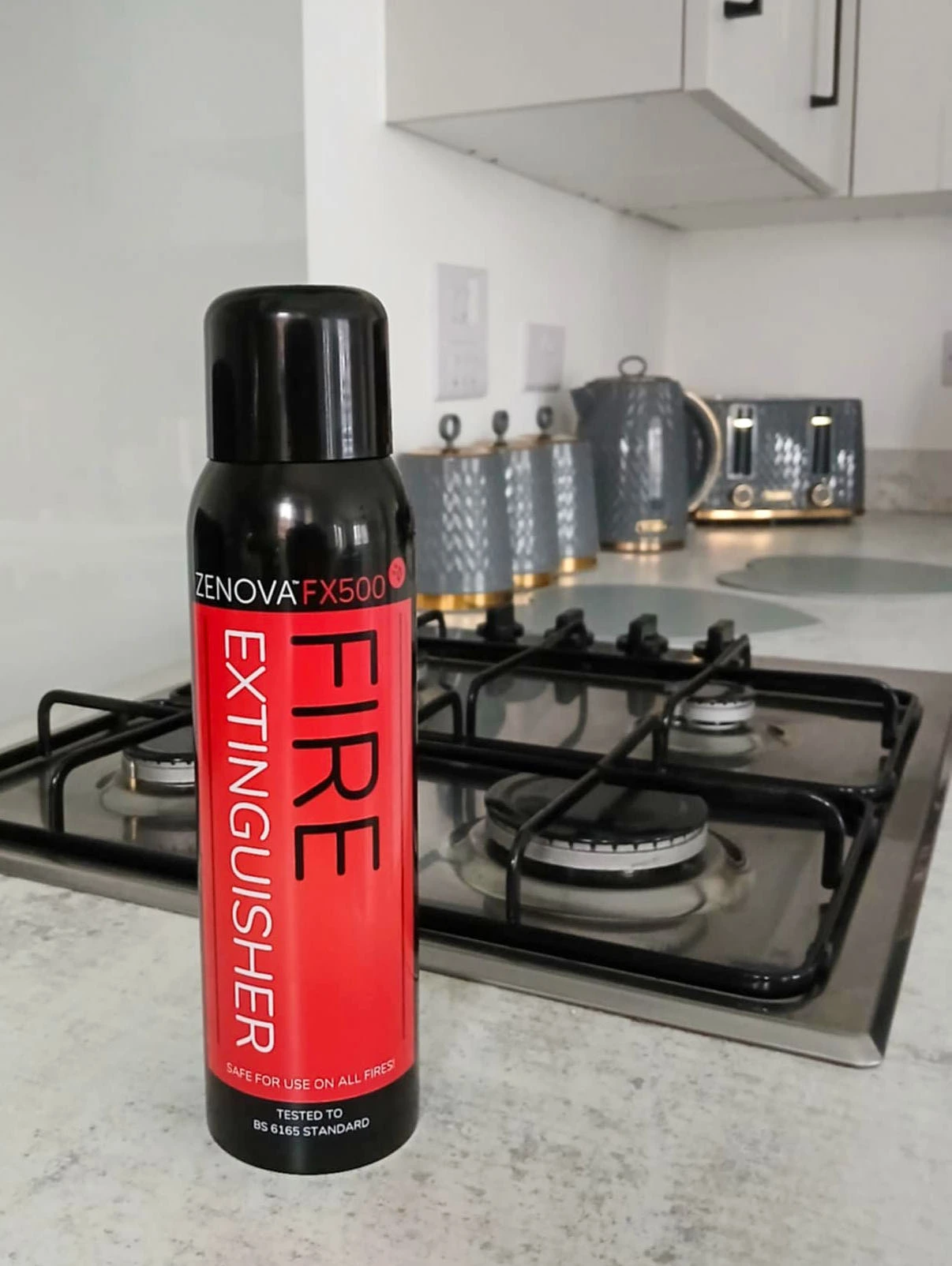
When installing your caravan fire extinguisher, you must ensure that the placement does not impact accessibility.
Remember, if a fire occurs, you must be able to easily access your fire safety equipment to react efficiently and safely. When installing a caravan fire extinguisher, make sure you:
Place the fire extinguisher near the door or exit.
Keep the fire extinguisher safely away from cooking oils and cooking appliances.
Mount the caravan fire extinguisher in a dedicated bracket.
An optical smoke alarm is the ideal choice for fire detection in caravans. Smouldering fires have a higher risk of occurring inside caravans due to the soft furnishings. Optical smoke alarms are designed to respond quickly to smouldering fires.
When you choose an optical smoke alarm for your caravan, check that it is certified to BS EN 14604:2005, a European and British Standard that specifies comprehensive requirements for smoke alarm performance, reliability, and durability.
This certification ensures the alarm has been independently tested to detect smoke at appropriate concentrations, has adequate power supply reliability, can withstand caravan environmental conditions, and produces an alarm signal of sufficient volume.
Maintaining your caravan fire safety goes beyond simply investing in safety equipment. Consider how often you use your caravan, campervan or tiny home. If you frequently take breaks from it, you can remove your smoke alarms during these periods.
Battery-powered smoke alarms are effective, but their performance depends on battery life. To prevent premature drainage and protect the device from dampness, remove the alarm when not in use. Test it weekly, and ideally before each trip, to ensure optimal fire safety.
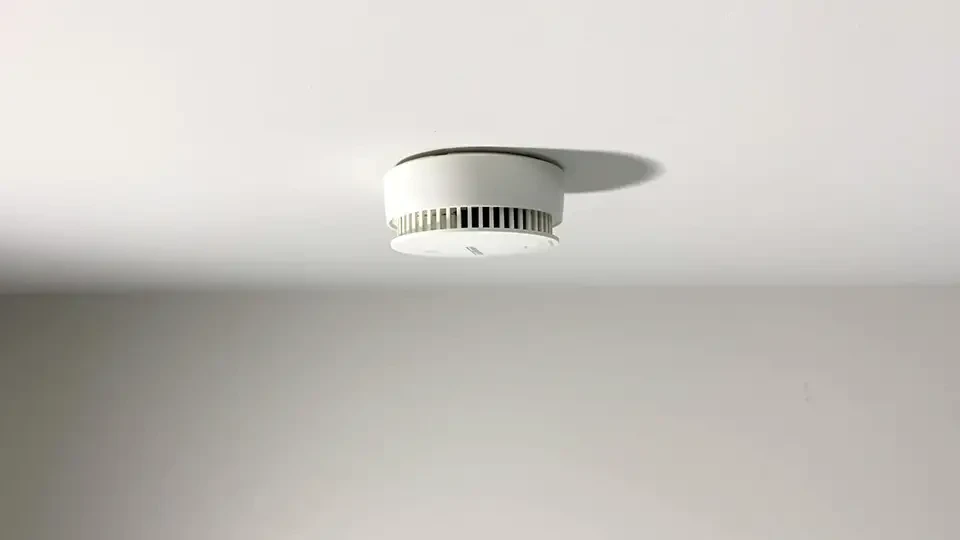
Installing heat and smoke alarms in your caravan can significantly increase fire safety. But where exactly should you install these devices?
Your alarms must be:
Installed at least 300mm from light fittings and walls.
Ideally fitted as centrally in the room as possible.
Installed at least 300mm from any adjacent wall.
If you are positioning your smoke alarm on the wall, the top of the detection element must be between 150mm and 300mm below the ceiling.
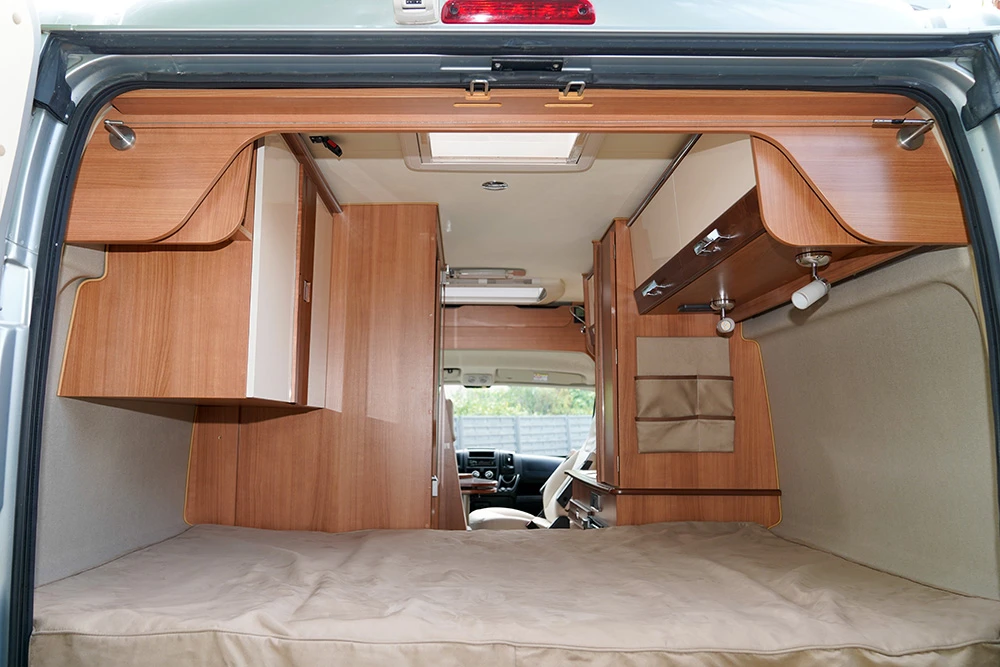
Just as heat and smoke alarms eliminate the stress of constantly monitoring for dangers in your caravan, carbon monoxide detectors provide essential protection by silently guarding against this invisible, odourless threat.
Carbon monoxide, or CO, is a colourless and odourless gas. It is very toxic and comes from broken fuel-burning appliances that use an open flame. In your caravan, these appliances could include a water boiler or a heater.
Carbon monoxide poisoning can make you seriously ill. Short-term inhalation can lead to flu-like symptoms. However, the longer you spend unknowingly inhaling this gas, the more damage it can cause.
CO alarms work by monitoring the carbon monoxide levels in the air. If they notice a sudden spike, the alarm will trigger.
It will alert you to the danger of CO by making a repeated chirp. This allows you to react quickly by evacuating and ventilating the affected area. Installing a CO alarm in your caravan gives you control over the safety of your space.
Install one carbon monoxide alarm in each living area of your motorhome or caravan.
If your caravan has two dividing doors, place a carbon monoxide alarm on either side.
Ensure that one carbon monoxide alarm is fitted near gas-burning appliances.
One carbon monoxide alarm should be installed in the bedroom.
You should put your carbon monoxide alarm above a window or door frame. Make sure there is a 15cm gap between the alarm and the ceiling. This gap helps with proper airflow.
If the room has a sloped ceiling, place the CO alarm at the highest point. Keep a 15cm space above it.
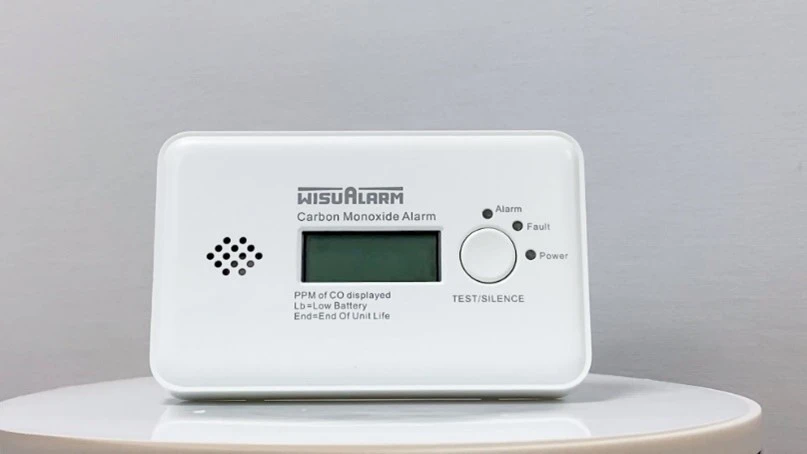
Ensuring your caravan or motorhome is safe from both fire and carbon monoxide (CO) involves investing in the right safety equipment, maintaining safe practices, and performing regular maintenance checks.
Install Fire Safety Equipment: Equip your vehicle with fire blankets, fire pillows, small fire extinguishers, and smoke, heat, and CO alarms to monitor potential hazards and provide manual fire control when necessary.
Control Open Flames: Never light candles inside your caravan, leave cooking unattended, or smoke indoors. Always keep your space clear of flammable materials and potential fire hazards to allow for safe evacuation in case of an emergency.
Maintain Safe Parking Distances: Always park your caravan at least six metres away from other vehicles, tents, or caravans. This helps prevent the rapid spread of fire between parked vehicles.
Carbon Monoxide Precautions: Install a carbon monoxide alarm to detect dangerous levels of CO. Avoid bringing barbecues inside, using fuel-burning appliances for heating without proper ventilation, or running generators inside your vehicle. Regularly test your CO alarm to ensure it’s working effectively.
By following these tips, you can create a safer environment in your caravan or motorhome, reducing the risks of both fire and carbon monoxide exposure.
Protecting your caravan, motorhome, or campervan from fire and CO risks requires both awareness and action. By adding important safety tools to your leisure home, you can protect against dangers.
Use small fire extinguishers, fire blankets, smoke alarms, heat alarms, and CO detectors. This helps you stay safe and ready for any hazards. Proper installation and maintenance of these devices ensure they function effectively when needed.
If you need advice on fire safety equipment for your mobile holiday home, email us at [email protected] or call us on 0330 058 0630.
30/05/2024 • by Lynsey B